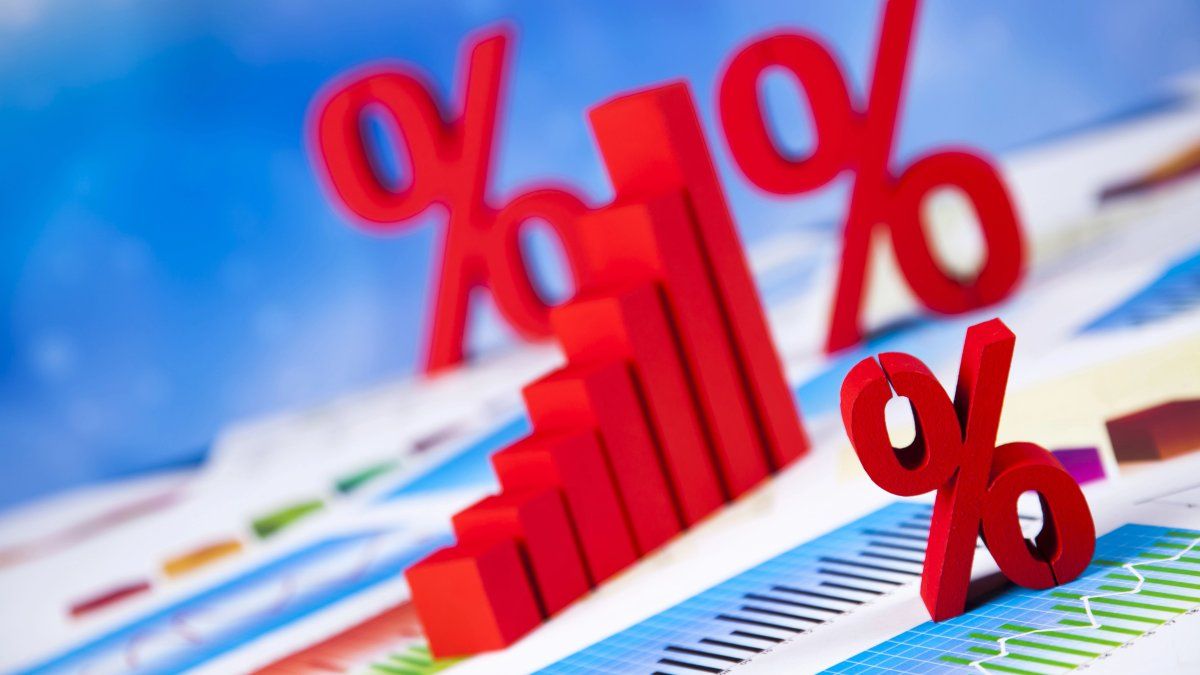Inflation-adjusted peso bond rates converge to dollar bond rates, in a climate of positive peso rates and flattened dollars. The internal rate of return of the LECAP is around 54% annually at 63 days and 59% annually at 276 days. These rates are very positive regarding inflation, if we estimate inflation of around 30% within the next 12 months.
If we were to take the data from the Central Bank’s market expectations survey, the expected inflation rate would be around 44%, which would also leave us with a positive interest rate. The implicit rate of the future dollar is around 45% annually, this implies that the LECAP rate in pesos is also highly positive.
The peso devaluation rate is at 30% annually, therefore, a LECAP rate of around 54.0% to 59% in the coming months is highly positive. In this context, we must say that the high interest rate ends up disciplining the different types of dollars with which a businessman in Argentina lives: wholesale dollar at $968, official dollar at $989.50, importing dollar $1,040, exporting dollar $1,040, MEP dollar $1,214, Senebi dollar $1,212, CCL dollar $1,234, blue dollar $1,240 and card dollar $1,583.
As we can see, we have a compression between the different values of the dollar, where alternative dollars begin to fall, while the wholesale and official dollar rises in search of a common price around $1,100.
This rate map that we have analyzed also invites us to reconsider the possibility of working with third-party money in the company. Validating a loan rate for companies in pesos of around 55% annually would leave us with a very positive interest rate compared to inflation. If the project we carry out does not achieve a higher rate of profitability, we will be in real trouble. On the other hand, financing in dollars is much cheaper than financing in pesos, given that the peso is being revalued in the Argentine Republic.
Bonds converge
When Javier Milei took office, the inflation-adjusted peso bond TX26 showed a yield equivalent to inflation minus 2.0%. A YPF negotiable obligation in dollars, maturing in 2026, yielded 10.0% annually, and a sovereign bond in dollars, such as AL 29, yielded 50% annually.
Currently, the TX26 bond yields inflation plus 10.0%, the Bopreal series 3 bond yields 14.0% annually, the AL29 bond yields 22.5% annually, and a negotiable obligation in YPF 2026 dollars yields 7.0% annually. .8% annually.
Let’s go in parts. Before Javier Milei assumed the presidency, the market discounted a default on Argentine bonds in a scenario of high inflation. The rate in pesos adjusted for inflation was negative at 2.0%, while a negotiable obligation in dollars of YPF with a similar term had a positive rate of 10.0% per year. Currently, both investments were invested, the rate of return of the bond in pesos adjusted for inflation is positive at 10%, and the negotiable obligation in dollars of YPF yields 7.8% annually, being below the rate of a bonus in pesos.
The rate gap in dollars and pesos adjusted for inflation is about to converge at the same rateas seen in the comparison between the rate of return of the inflation-adjusted peso bond TX26, which yields inflation plus 10%, and the rate of return of Bopreal in dollars, which yields 14.0% annually.
Inflation
Everything would suggest that the inflation rate for the month of September would be around 3.5%, while, in October, the probable decline in electricity, gas and fuels could place the price index closer to 3.0% or even let the measurement of the month start with 2.
In a context of falling inflation, many investors are arbitraging bonds in pesos adjusted for inflation by LECAP. The bills yield around 59% annually in one year, the bonds in inflation-adjusted pesos yield inflation (we estimate it at 30% annually) plus an additional rate of 10%. In this context, we would achieve a rate of 43.0%, which leaves us with a bitter taste in this investment compared to the performance of the bills.
Conclusions
. – The LECAP They are showing highly positive returns against inflation, which results in a compression between the value of wholesale and alternative dollars. On the other hand, LECAP pales the yield of bonds in inflation-adjusted pesos.
. – The high rates in pesos for financing in companies force entrepreneurs to use their own capital, search for a partner or change their preferences for financing in dollars, which are much cheaper in terms of interest rates.
. – The rates of bonds in pesos adjusted for inflation are located at higher levels than the rates in dollars of negotiable obligations, and just below the boreal bonds of the Central Bank, this indicates that the risk of investing in pesos and In dollars it is similar, with which the market tells us that it does not see a devaluation, much less an inflationary spiral ahead.
. – In December 2023, before Javier Milei took office, the internal rate of return of the sovereign bond in AL29 dollars was at 50% annually. After 10 months of government, it yields less than half, with a rate of 22.5% annually. Obviously the positive fiscal result, the capitalization of the Central Bank, stopping issuing money and less inflation is growing in the Argentine Republic. Fact, not story.
Source: Ambito
I am Pierce Boyd, a driven and ambitious professional working in the news industry. I have been writing for 24 Hours Worlds for over five years, specializing in sports section coverage. During my tenure at the publication, I have built an impressive portfolio of articles that has earned me a reputation as an experienced journalist and content creator.




